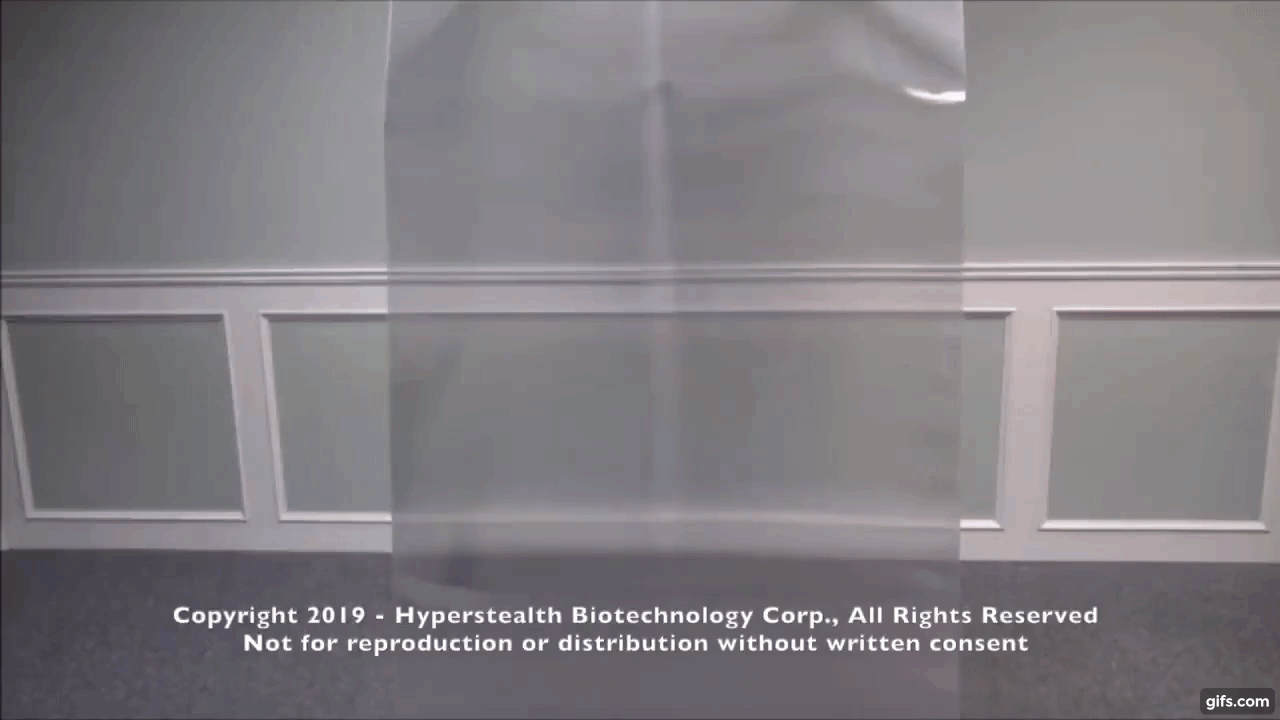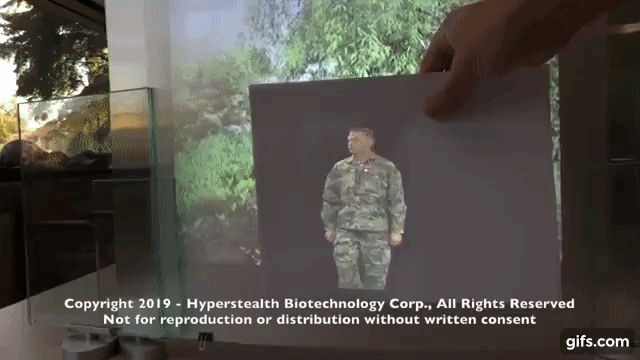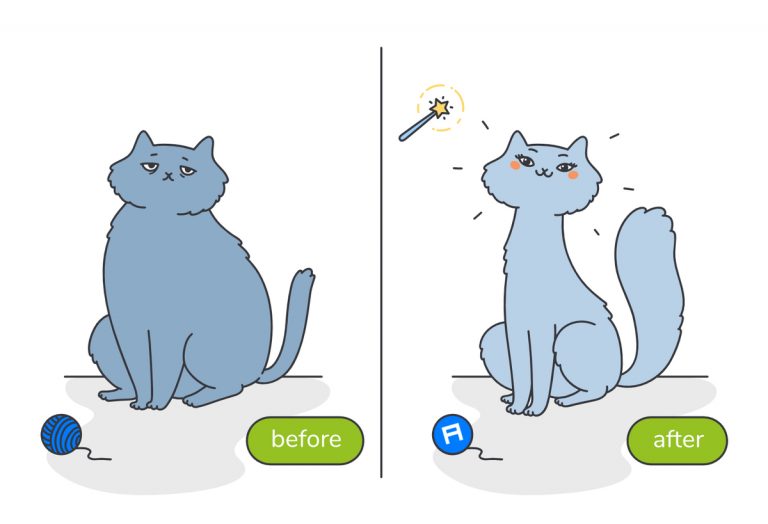Canadian company developed material that makes you invisible

Yesterday's science fiction is gradually becoming a reality. Vancouver-based Hyperstealth Biotechnology from Vancouver has developed and patented a thin material that provides, in her words, "quantum invisibility." He is able to do some things for himself almost completely indistinguishable. A power source is not required. It is assumed that in the future, structures made of such material will be used by soldiers and police.
The Canadian company is developing special camouflage uniforms that are used in the armies of the USA, India, Jordan, UAE, Canada, Slovakia, New Zealand. The foundations for the “fabric with invisibility” were laid back in 2010, and now the technology has been presented to the general public. Previously, the army of Britain and the United States expressed interest in it.
The press release contains information about the features of the futuristic material. Guy Kramer, president of Hyperstealth and the inventor of invisibility fabric, has filed four patent applications for technologies that make it work. Here is a brief summary of each of them:
one. "Quantum Invisibility. The main technology on which everyone else is built. Plastic-like material for invisibility. The rays of light, falling into microscopic lenses, are scattered and washed off, and everything that is at a certain distance behind the material becomes indistinguishable. A new type of plastic not only bends the rays in the visible spectrum, but also in ultraviolet and infrared light.
The patent describes 13 different material options, with different configurations, which can work in different environments and different conditions. The design features of the material have not yet been disclosed to the general public. Potential uses include police shields that are not visible behind them.

2. “Amplifier of solar panels”. Another science fiction technology. The use of the same material in the format of a mirror, which helps to direct the sun's rays, allows you to triple the "exhaust" of a conventional single-crystal panel. The standard used to calculate the maximum performance of solar panels takes into account the level of solar radiation available at the equator. Guy Kramer was able to achieve it in the usual weather conditions of Vancouver, on all types of standard panels (Thin-Film, single-crystal, polycrystalline). Detailed video here. Guy Kramer says that the material shows itself much better than ordinary mirrors, because it distributes the sun's rays across the panel, and does not allow them to hit at one point.
3. “System with display”. The patent describes a technology that allows you to use the material with a projector to achieve a unique effect. Features of the material allow you to reflect light so that the visible part of the image depends on where the browser is located. And, for example, moves along with his movement around the room. More details are explained in the video here. The same technology allows you to see completely different videos on the same display, depending on which side of the screen the viewer is located.

An unusual effect when projectors illuminate the material: the video of the front projector is displayed at the rear, and the rear – at the front
One of the potential uses is a military hologram on the same shield. Or a hologram of an ordinary desert hiding a tank. Another suggested use case is for hunters. A hologram of a deer or tree in a forest, behind which a person with a rifle is actually hiding. From household applications – for example, the creation of unusual “voluminous” photographs, given that the cost of the material is quite low, and it is quite light.
four. "Laser scattering, deflection, manipulation". The latest patent describes a device for splitting laser light, which Guy Kramer demonstrates in his videos. One ray is divided into 3,888,000 small rays. This can be combined with the LIDAR system (processing information about remote objects, including using lasers) – to help autopilot cars navigate in dangerous weather conditions.
At the moment, the company is focused on selling its technology to the military and beginning the mass production of its new material (it has no official name yet). But Kramer also accepts proposals from individuals who can come up with effective options for the commercial use of such plastic.





